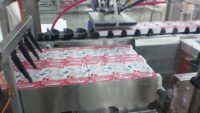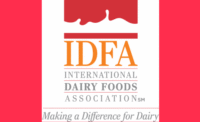By working with and through the industry to increase sales, the dairy checkoff is helping producers – and the dairy industry – change, innovate and grow.
Dairy producer promotion leaders delivered this message to nearly 1,000 producer and industry representatives at the 2013 National Dairy Promotion and Research Board/National Milk Producers Federation/United Dairy Industry Association joint annual meeting in Phoenix, Nov. 11-13.
Steve Maddox, a California dairy producer and outgoing NDB Chairman, shared how checkoff-led partnerships help move more milk. “Change is vital to the success of any business or industry, and this is especially true of our checkoff program,” Maddox said. He pointed to a strategic shift several years ago, where the checkoff works in partnership with major dairy and foodservice companies and consumer brands to grow sales.
Maddox participated in a panel discussion with representatives from McDonald’s USA and The Quaker Oats Company that highlighted how these partnerships work on behalf of dairy producers. Additionally, Taco Bell President Brian Niccol and Chief Food Innovation Officer Liz Matthews presented the chain’s plans to help grow sales through product innovation and new menu items.
Maddox said partnerships with major consumer brands – including Domino’s Pizza, Taco Bell, McDonald’s, and Quaker – have contributed to billions of pounds of additional milk sales.
“Working with companies who have a shared commitment and goal to increase sales is the right thing to do,” Maddox explained. “It allows us to leverage resources and expertise, and create a win-win for us and those we work with.”
Revitalizing Fluid Milk Requires Commitment to Innovation
Neil Hoff, a Texas dairy producer and UDIA Chairman, explained how the checkoff is working to turn around the decades-long decline in fluid milk sales. “At the direction of producer leaders, checkoff staff has met with nearly 200 executives from 50 companies that include fluid milk processors, dairy cooperatives, retailers and suppliers to identify the underlying factors to stabilize and grow fluid milk sales,” Hoff said. “Innovation is critical to fluid milk’s survival.”
Hoff said the checkoff and processors are putting muscle behind the effort.
“To date, the checkoff has invested $9 million to turn around sales and bring consumers back to the category. Building on our strategy to use other people’s financial and human resources, others have invested $81 million so far,” he added.
The opportunity is enormous as it’s anticipated that investments in the next five years will total hundreds of millions of dollars.
Representatives from Dairy Farmers of America and Shamrock Foods Company joined Hoff in sharing how the industry is investing in manufacturing, packaging and marketing innovation to bring shoppers back to the dairy case.
Hoff reminded producers that progress will take time. “Our challenges didn’t occur overnight and solutions won’t be realized overnight,” he said. “This is a decades-long, industry-wide commitment to innovation.”
Growing Sustained Sales through Exports
Another bright spot for long-term U.S. dairy product and ingredient sales is exports – a significant swing from just 15 years ago.
“I remember when we had to beg other countries to take our excess dairy products,” said Paul Rovey, Arizona dairy producer and chairman of Dairy Management Inc., which manages the national dairy checkoff program with funding by NDB and UDIA. “Today, one out of every seven tanker loads of milk is exported.”
For 2013, exports are on track to total $6.5 billion in sales – a 25-percent increase from 2012, and the fourth consecutive record year for U.S. dairy exports.
Rovey cited two critical factors for this growth: the success of the producer-created U.S. Dairy Export Council (USDEC) and a commitment by industry to become a consistent supplier for international markets.
“USDEC thrives with support from dairy producers, USDA’s Foreign Agriculture Service and 100-plus dues-paying members,” Rovey said. “This broad-based collaboration maximizes our checkoff investment to grow the U.S. dairy industry and meet unmet dairy demand around the world.”
Rovey pointed to a key learning after participating in an information mission to Japan a few years ago.
“In a meeting with the head of McDonald’s local supply chain, he made it clear that building ongoing relationships is critical for long-term export sales,” Rovey recalled. “We need to better know our customers and make the commitment to satisfy the needs of international markets.”
Rovey said the U.S. dairy industry must keep its eye on the prize to continue this trend. “We must continue to change, innovate and grow. We must stay focused on our domestic market, yet also remain attentive to growing exports. Both markets are important to secure our future,” he said.










